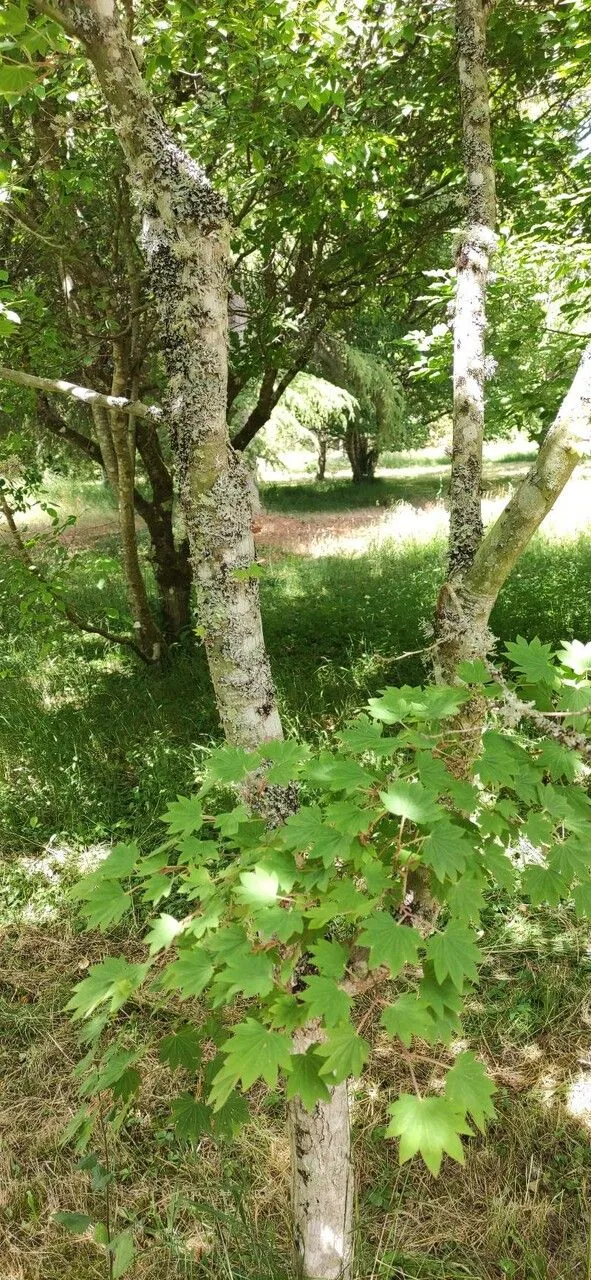
Author: Miq.
Bibliography: Ann. Mus. Bot. Lugduno-Batavi 2: 87 (1865)
Year: 1865
Status: accepted
Rank: species
Genus: Acer
Vegetable: False
Observations: C. & S. Japan
Siebold’s maple (Acer sieboldianum) is a captivating deciduous tree native to the temperate regions of Central and Southern Japan. Esteemed for its ornamental value, this maple species belongs to the family Sapindaceae, which encompasses a variety of well-known trees and shrubs.
Discovered and classified by the botanist Friedrich Anton Wilhelm Miquel, Siebold’s maple was first documented in 1865, as recorded in the Annals of the Botanical Museum in Leiden (Ann. Mus. Bot. Lugduno-Batavi 2: 87). The tree was named after Philipp Franz von Siebold, a notable 19th-century German physician, and botanist who made significant contributions to the study of Japanese flora.
Acer sieboldianum is easily recognizable by its distinctive leaves, which bear a striking resemblance to those of the more commonly known Japanese maple (Acer palmatum). The leaves are usually palmate, featuring five to seven lobes, and display a vibrant array of colors throughout the seasons—from the lush green of spring and summer to the fiery hues of red, orange, and yellow in the autumn.
Siebold’s maple typically grows to a height of 10 to 15 meters, forming a graceful, spreading canopy that provides a stunning focal point in gardens and landscapes. The tree’s smooth, gray bark and delicate branching structure add to its ornamental appeal.
This species prefers well-drained, slightly acidic soils and thrives in both full sun and partial shade, making it a versatile choice for various planting sites. Though relatively low maintenance, it benefits from regular watering, especially during dry periods, to maintain its health and vigor.
Beyond its aesthetic appeal, Siebold’s maple plays a role in the ecological landscape of Japan. It provides habitat and food for various insects and birds, contributing to the region’s biodiversity.
Whether planted as a solitary specimen or grouped in a collection of maples, Siebold’s maple stands out as a magnificent addition to any garden, reflecting the timeless beauty and elegance of Japanese horticultural traditions.
Eng: siebold’s maple
Deu: siebolds ahorn
Swe: fagerlönn
Jpn: kohauchiwakaede
Nno: fagerlønn
Nob: fagerlønn
En: Siebold’s maple
Fi: Sirovaahtera
De: Siebolds Ahorn, Siebolds Fächer-Ahorn
Hu: Siebold-juhar
Ja: Itaya-meigetsu, Ko-hauchiwa-kaede, Kohauchiwakaede
Lv: Zīdbolda kļava
Nb: Fagerlønn
Nn: Fagerlønn
Fa: افرای زیبولد
Pl: Klon Siebolda
Ru: Клён Зибольда
Sv: Fagerlönn
Taken May 29, 2022 by Dieter Albrecht (cc-by-sa)
Taken Jul 26, 2022 by #MaryKingfishers MK (cc-by-sa)
Taken Jun 28, 2021 by Philippe de Spoelberch (cc-by-sa)
Taken Jun 28, 2021 by Philippe de Spoelberch (cc-by-sa)
Taken Apr 24, 2022 by Philippe de Spoelberch (cc-by-sa)
Taken May 29, 2022 by Dieter Albrecht (cc-by-sa)
Taken Apr 24, 2022 by Philippe de Spoelberch (cc-by-sa)
Taken May 29, 2022 by Dieter Albrecht (cc-by-sa)
Taken Apr 24, 2022 by Philippe de Spoelberch (cc-by-sa)
Taken Jun 28, 2021 by Philippe de Spoelberch (cc-by-sa)
Taken Jun 28, 2021 by Philippe de Spoelberch (cc-by-sa)
Taken Apr 24, 2022 by Philippe de Spoelberch (cc-by-sa)
Growth habit>: Tree
Family: Myrtaceae Author: (F.Muell.) K.D.Hill & L.A.S.Johnson Bibliography: Telopea 6: 402 (1995) Year: 1995 Status:…
Family: Rubiaceae Author: Pierre ex A.Froehner Bibliography: Notizbl. Bot. Gart. Berlin-Dahlem 1: 237 (1897) Year:…
Family: Sapindaceae Author: Koidz. Bibliography: J. Coll. Sci. Imp. Univ. Tokyo 32(1): 38 (1911) Year:…
Family: Asteraceae Author: A.Gray Bibliography: Pacif. Railr. Rep.: 107 (1857) Year: 1857 Status: accepted Rank:…
Family: Fabaceae Author: Medik. Bibliography: Vorles. Churpfälz. Phys.-Ökon. Ges. 2: 398 (1787) Year: 1787 Status:…
Family: Aspleniaceae Author: (Cav.) Alston Bibliography: Bull. Misc. Inform. Kew 1932: 309 (1932) Year: 1932…